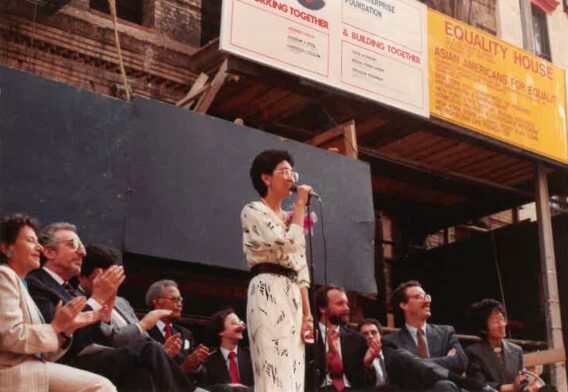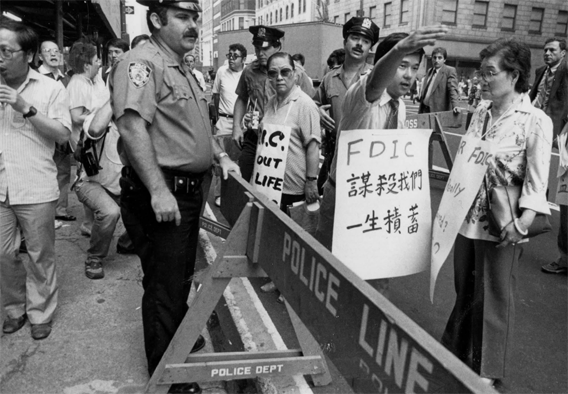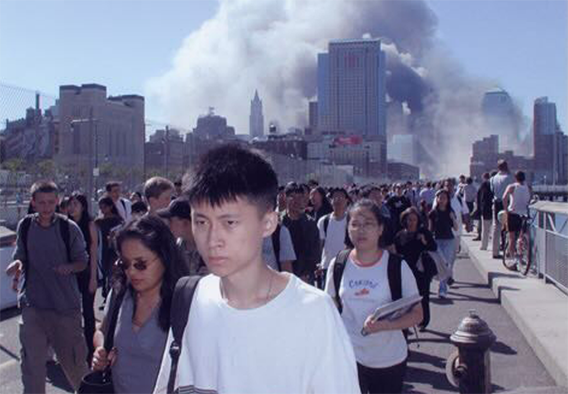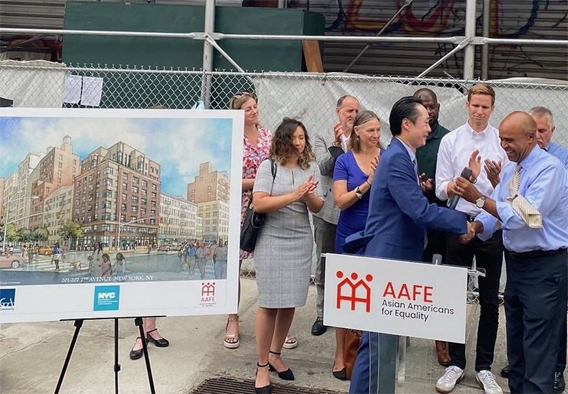
Asian Americans for Equality originated on the streets of Manhattan’s Chinatown in 1974. Moved to action by a private developer who refused to hire Asian workers for the government-funded Confucius Plaza construction project, community activists raised their voices, led months of protests and finally prevailed. In so doing, they created a powerful grassroots movement that has endured for five decades.
The victory for worker rights was a key moment in the fledgling Asian American social justice movement, which drew inspiration from the Black and Latino civil rights struggles of the era. It showed that Asians in New York City were prepared to speak out and organize against systemic inequality and a city government that routinely ignored Chinatown. The victory at Confucius Plaza established Asian Americans for Equal Employment, as the organization was then known, as a trusted community organizer and advocate, helping to lead more protests and, having established an all-volunteer office in Chinatown, becoming a go-to resource center for low-income tenants facing harassment and for workers being mistreated. In 1977, Asian Americans for Equal Employment became Asian Americans for Equality, and six years later AAFE hired its first executive director, Doris Koo, who led the transition to a full-fledged nonprofit organization with a professional staff.

In 1985, a devastating fire tore through a tenement in Chinatown, killing two elderly tenants and leaving 125 residents homeless. Out of this tragedy, AAFE’s leaders came to the realization that protest and advocacy would not be enough to produce the kind of change the community required. The time had come for AAFE to begin creating hands-on solutions to address the affordable housing crisis. In this moment, the organization became the first group in New York City to utilize low-income housing tax credits to develop affordable housing. AAFE’s first housing development, known as Equality House, included 59 apartments at 176 Eldridge St. During the next three decades, AAFE would preserve and create hundreds of units of affordable housing across Chinatown and the Lower East Side, employing other innovative approaches that were, at the time, untested but became models emulated by mission driven developers nationwide.

During the next three decades, AAFE would preserve and
create hundreds of units of affordable housing across
Chinatown and the Lower East Side
In response to another persistent problem, discriminatory lending practices, AAFE began providing direct financial assistance to community members. In 1997, Renaissance Economic Development Corporation became a community development financial institution (CDFI), to disperse low-interest small business loans and offer training to immigrant entrepreneurs. Two years later, a second CDFI was created, AAFE Community Development Fund, to facilitate loans and provide financial education programs to families seeking to buy their first home. As New York’s Asian American community grew, planted roots in neighborhoods beyond Chinatown and became more diverse, AAFE adapted to meet their changing needs, establishing an office in Flushing, Queens in 1996, working extensively in multi-ethnic coalitions and adding programs and language capacity to serve the pan-Asian community citywide. AAFE’s two affiliates, Renaissance and AAFE CDF, played integral roles in supporting small businesses and promoting homeownership in communities throughout Queens and Brooklyn.

AAFE’s two affiliates, Renaissance and AAFE CDF, played
integral roles in supporting small businesses and
promoting homeownership in communities throughout
New York City.
AAFE had always been a first responder, an organization serving the community in times of crisis, often providing essential emergency aid and support in underserved neighborhoods. This was never more true than during the September 11th, 2001 terrorist attacks. AAFE and Renaissance quickly came forward with an emergency loan fund to help stabilize small businesses, and advocated for government aid, which was slow to materialize. Outside support finally did arrive in the form of a $15 million loan fund from Empire State Development Corp., which Renaissance helped disperse. In 2002, AAFE launched the Rebuild Chinatown Initiative, a community-driven effort to create a blueprint for neighborhood revival. Through Rebuild Chinatown’s recommendations, approximately $100 million was invested by public and private funders to strengthen Chinatown.

Through the federally funded Chinatown/Lower East Side Acquisition Program, a post 9/11 initiative, AAFE was able to restore and preserve affordable rental apartments at risk of falling into the hands of real estate speculators, securing 130 units of rent stabilized housing. In 2013, AAFE became the first nonprofit organization to participate in the City of New York’s Affordable Neighborhood Cooperative Program (ANCP), renovating 244 Elizabeth St. in Lower Manhattan enabling residents to purchase their apartments to remain in the community. The organization then undertook similar projects in the Chelsea and East Village neighborhoods. In 2018, AAFE and partners HANAC and Monadnock Development opened One Flushing, a 100% affordable multigenerational development in the heart of Flushing, Queens with 231 apartments.

Today Asian Americans for Equality has transformed to become a nationally recognized comprehensive community development organization. But AAFE has remained true to its founding ideals. AAFE staff members are deeply rooted in the communities they serve, committed to grass roots advocacy and dedicated to building opportunity for all, regardless of background, in neighborhoods across New York City.
